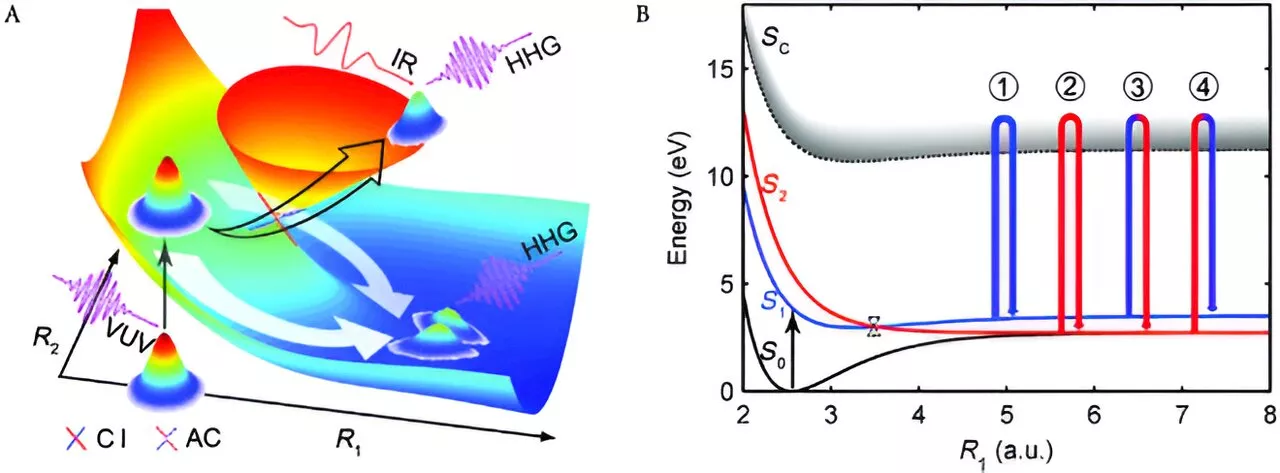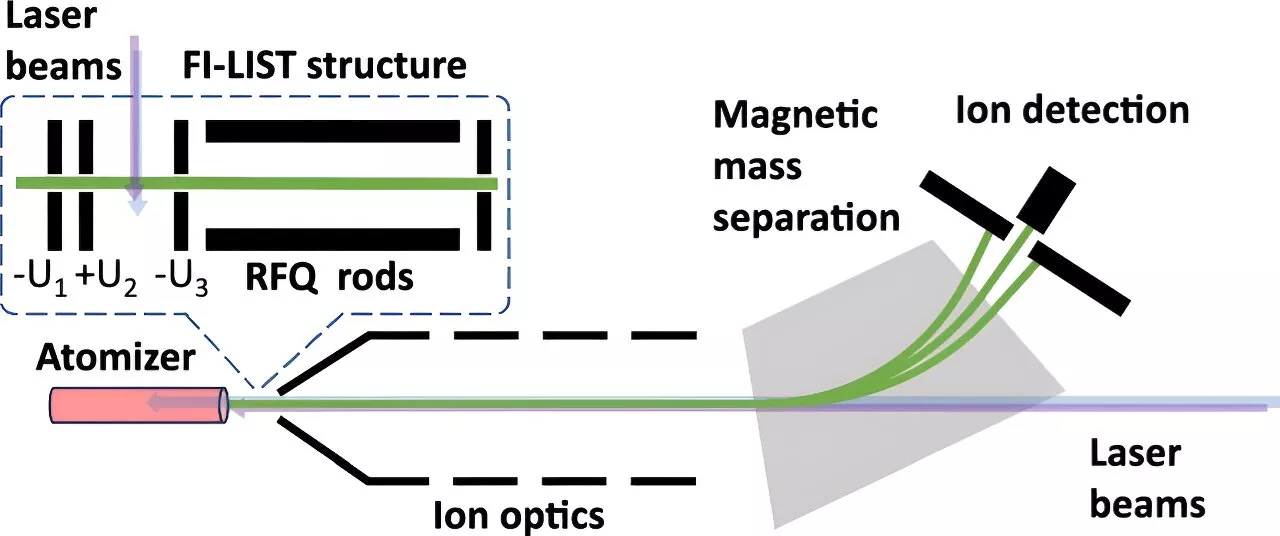Spectroscopy is the study of how matter absorbs and emits light and other radiation. It allows scientists to study the structure of atoms and molecules, including the energy levels of their electrons. Classical optical spectroscopy relies on the way particles of light called photons interact with matter.
Seeing the color of entangled photons in molecular systems retrieved 20 May 2024 from https://phys.org/news/2024-05-entangled-photons-molecular.html
This document is subject to copyright. Apart from any fair dealing for the purpose of private study or research, no part may be reproduced without the written permission. The content is provided for information purposes only.May 16, 2024 Use this form if you have come across a typo, inaccuracy or would like to send an edit request for the content on this page. For general inquiries, please use ourThank you for taking time to provide your feedback to the editors.
Your feedback is important to us. However, we do not guarantee individual replies due to the high volume of messages.to let the recipient know who sent the email. Neither your address nor the recipient's address will be used for any other purpose. The information you enter will appear in your e-mail message and is not retained by Phys.org in any form.Get weekly and/or daily updates delivered to your inbox.
Physics News Science News Technology News Physics Materials Nanotech Technology Science
United States Latest News, United States Headlines
Similar News:You can also read news stories similar to this one that we have collected from other news sources.
 Pump-probe high-harmonic spectroscopy could catch geometric phase effect around conical intersection in molecule: StudyA collaborative research team from Nanjing University of Science and Technology (NJUST) and East China Normal University (ECNU) has theoretically proposed that a pump-probe high-harmonic spectroscopy (HHS) driven by VUV-IR pulses can catch the geometric phase (GP) effect around the conical intersection (CI) and distinguish its quantitative...
Pump-probe high-harmonic spectroscopy could catch geometric phase effect around conical intersection in molecule: StudyA collaborative research team from Nanjing University of Science and Technology (NJUST) and East China Normal University (ECNU) has theoretically proposed that a pump-probe high-harmonic spectroscopy (HHS) driven by VUV-IR pulses can catch the geometric phase (GP) effect around the conical intersection (CI) and distinguish its quantitative...
Read more »
 Scientists use high pressure NMR spectroscopy to study structure of dynamic proteinsA pressure of 3,000 bar is applied to the cold shock protein B of Bacillus subtilis in a small tube in the NMR spectroscopy laboratory at the University of Konstanz. This is roughly three times the water pressure at the deepest point of the ocean.
Scientists use high pressure NMR spectroscopy to study structure of dynamic proteinsA pressure of 3,000 bar is applied to the cold shock protein B of Bacillus subtilis in a small tube in the NMR spectroscopy laboratory at the University of Konstanz. This is roughly three times the water pressure at the deepest point of the ocean.
Read more »
 Attosecond core-level spectroscopy reveals real-time molecular dynamicsChemical reactions are complex mechanisms. Many different dynamic processes are involved, affecting both the electrons and the nucleus of the present atoms. Very often, the strongly coupled electron and nuclear dynamics induce radiation-less relaxation processes known as conical intersections.
Attosecond core-level spectroscopy reveals real-time molecular dynamicsChemical reactions are complex mechanisms. Many different dynamic processes are involved, affecting both the electrons and the nucleus of the present atoms. Very often, the strongly coupled electron and nuclear dynamics induce radiation-less relaxation processes known as conical intersections.
Read more »
 High-pressure spectroscopy: Why 3,000 bars are needed to take a comprehensive look at a proteinWhy 3,000 bars are needed to take a comprehensive look at a protein: Researchers present a new high-pressure spectroscopy method to unravel the properties of proteins' native structures.
High-pressure spectroscopy: Why 3,000 bars are needed to take a comprehensive look at a proteinWhy 3,000 bars are needed to take a comprehensive look at a protein: Researchers present a new high-pressure spectroscopy method to unravel the properties of proteins' native structures.
Read more »
 Probing neptunium's atomic structure with laser spectroscopyA new technique developed by researchers in Germany can measure ionization states of this element more precisely than before, with implications for its detection and remediation in radioactive waste.
Probing neptunium's atomic structure with laser spectroscopyA new technique developed by researchers in Germany can measure ionization states of this element more precisely than before, with implications for its detection and remediation in radioactive waste.
Read more »
 Accelerating material characterization: Machine learning meets X-ray absorption spectroscopyLawrence Livermore National Laboratory (LLNL) scientists have developed a new approach that can rapidly predict the structure and chemical composition of heterogeneous materials.
Accelerating material characterization: Machine learning meets X-ray absorption spectroscopyLawrence Livermore National Laboratory (LLNL) scientists have developed a new approach that can rapidly predict the structure and chemical composition of heterogeneous materials.
Read more »
